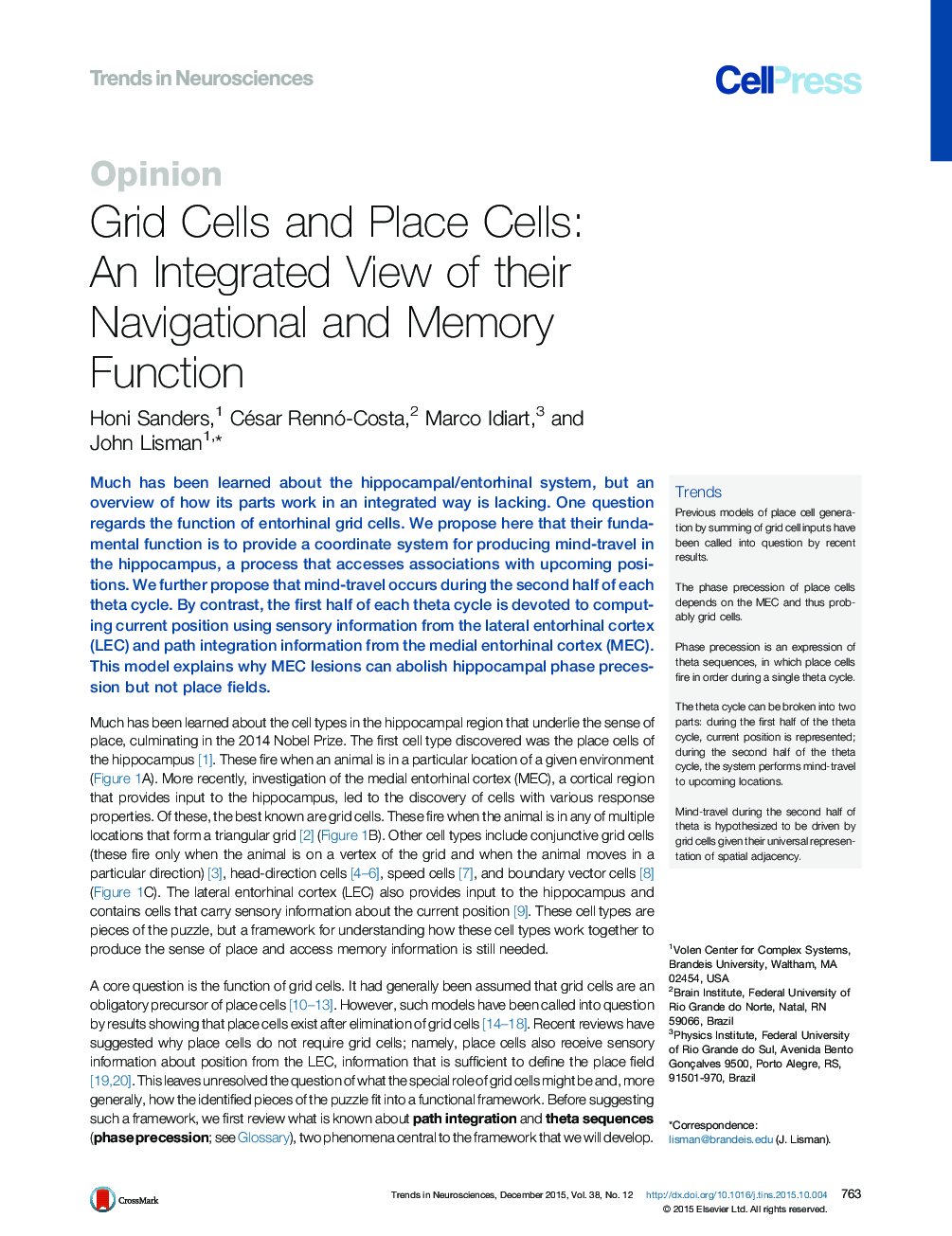| Article ID | Journal | Published Year | Pages | File Type |
|---|---|---|---|---|
| 4354208 | Trends in Neurosciences | 2015 | 13 Pages |
Much has been learned about the hippocampal/entorhinal system, but an overview of how its parts work in an integrated way is lacking. One question regards the function of entorhinal grid cells. We propose here that their fundamental function is to provide a coordinate system for producing mind-travel in the hippocampus, a process that accesses associations with upcoming positions. We further propose that mind-travel occurs during the second half of each theta cycle. By contrast, the first half of each theta cycle is devoted to computing current position using sensory information from the lateral entorhinal cortex (LEC) and path integration information from the medial entorhinal cortex (MEC). This model explains why MEC lesions can abolish hippocampal phase precession but not place fields.
TrendsPrevious models of place cell generation by summing of grid cell inputs have been called into question by recent results.The phase precession of place cells depends on the MEC and thus probably grid cells.Phase precession is an expression of theta sequences, in which place cells fire in order during a single theta cycle.The theta cycle can be broken into two parts: during the first half of the theta cycle, current position is represented; during the second half of the theta cycle, the system performs mind-travel to upcoming locations.Mind-travel during the second half of theta is hypothesized to be driven by grid cells given their universal representation of spatial adjacency.
